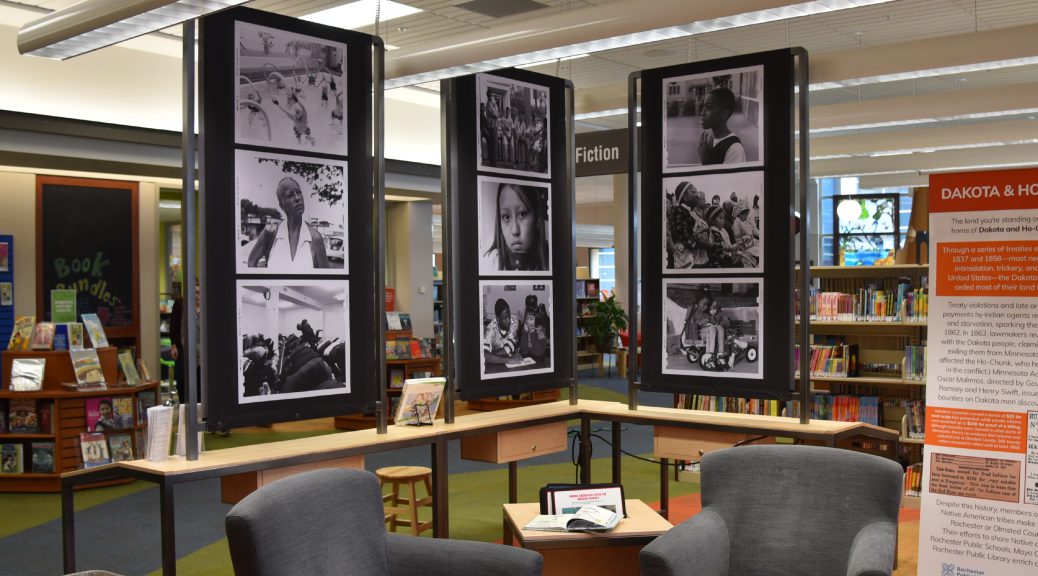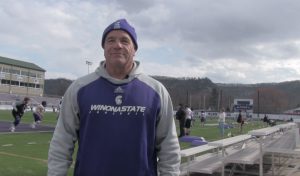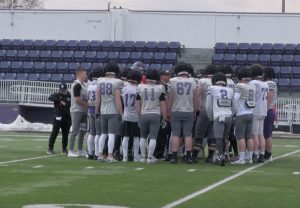By: Erin Jones and Andrew Schouweiler
A smaller version of the Science Museum of Minnesota’s RACE exhibit is on display at the Rochester Public Library until April 30, 2019.
Before the library, Rochester’s Apache Mall hosted the RACE exhibit.
The mini versions of the RACE exhibit, according to the Science Museum of Minnesota, are 500 square-feet and include easy-to-set-up displays for smaller venues like the library and the mall.
The content of each display is created to be easily understood, so people of all ages can participate in the walk-through exhibit.
Kim Edson, head of readers’ services at Rochester Public Library, explained the goal of the RACE exhibit.
“It takes it from both a scientific point of view – looking at race from a biological level, by the way, there’s no such thing – and it also explores the sociological concept of race and how it has had many impacts in our culture,” Edson said.
Rochester was home to the RACE exhibit for eight months in 2010. The exhibit was brought back this year through grants from the federal government.
Dee Sabol, executive director of Rochester’s Diversity Council, explained how the grants allowed the Science Museum to work with the Rochester Public Library to bring the RACE exhibit back to Rochester.
“They were able to create the smaller, traveling versions of the RACE exhibit and bring them out to the community through those grant funds,” Sabol said.
According to Winona State University’s Associate Vice President of Inclusion and Diversity Jonathan Locust, funds toward the exhibit’s return were also donated by the Inclusion and Diversity office.
“There were donations from my office in particular for the amount of $500, as well as a donation from WSU-Rochester in the amount of $500,” Locust said.
Locust said donating to the exhibit was beneficial to Winona State and to people in communities surrounding the exhibit who may not know the history of race and racism.
He said much of the history people have learned over time is not inclusive of people who are of different races, genders, ethnicities and abilities.
“Our history has been completely whitewashed,” Locust said. “Having people go out and doing some digging on their own [then being able to say], ‘What information has been left out of the history that I’ve learned?’ And then maybe ask those deeper questions, ‘Why has it been left out?’”
Edson and Sabol both said getting people to ask those hard questions and generating conversation about race and racism is another part of the RACE exhibit’s purpose.
“We believe this exhibit gives people an opportunity to think a little bit deeper about the topic,” Edson said. “Our goal is to engage community conversations about this issue and hopefully impact change.”
Sabol said so far, the exhibit has been successful in generating community discussion.
She said when the RACE exhibit was in Rochester in 2010, people left angry and disagreed with the information presented in the displays.
“They would come back more than once and it would at least get them involved in a discussion and I think that’s really the point is to look at something a little bit differently,” Sabol said.
Traffic to the exhibit this year has been high as well, according to Locust.
With the exhibit in the mall during the holidays, the flow of visitors was heavy, which carried over into the following months.
“We know we got some heavy traffic right around MLK Day, we know we got some in February for Black History Month because there are some people who did some programs in there,” Locust said.
Edson and Sabol said with conversation about race being generated within the community, they are working on trying to find a permanent home in Rochester for the RACE exhibit.
Grant funds have given Edson and Sabol the opportunity to put on additional programming, so members of the community can take advantage of other resources to learn about race.
“We’ll have speakers and presenters now who will talk about different aspects of race and racism,” Sabol explained. “There are other learning opportunities, some workshops and things like that [and] we hope to have a couple film screenings as well.”





